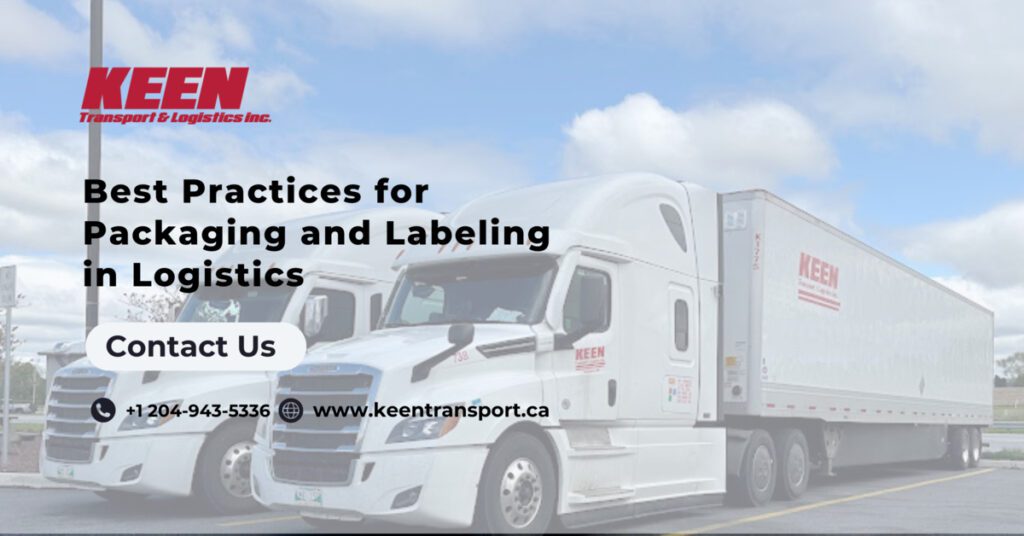Effective packaging and labeling play a crucial role in the logistics and transportation of goods, ensuring they arrive safely and on time at their destination. Whether you’re shipping domestically or internationally, adhering to best practices can streamline operations, minimize risks, and enhance customer satisfaction. Here’s a comprehensive guide to help you optimize your packaging and labeling processes:
Importance of Effective Packaging and Labeling
Proper packaging and labeling are essential for several reasons:
- Protection: Packaging protects goods from damage during transit, handling, and storage. Proper labeling ensures that packages are handled correctly and reach their intended destination.
- Efficiency: Well-packaged goods are easier to handle, stack, and store, optimizing space utilization in warehouses and vehicles.
- Compliance: To avoid delays and penalties, packaging and labeling must comply with industry standards, regulatory requirements, and international shipping guidelines.
- Customer Satisfaction: Clear and accurate labeling enhances customer experience by providing vital information and ensuring timely delivery.
Guidelines for Effective Packaging
- Choose the Right Packaging Materials:
- Select packaging materials based on the goods’ nature, size, and fragility.
- Use durable materials that can withstand handling and environmental conditions.
- Properly Secure Items:
- Use cushioning materials like bubble wrap, packing peanuts, or foam inserts to protect fragile items.
- Secure goods inside boxes or containers to prevent movement during transit.
- Optimize Packaging Size:
- Choose packaging that fits the size of the product to minimize space and reduce dimensional weight charges.
- Use adjustable packaging solutions to accommodate varying product sizes.
- Consider Environmental Factors:
- Use weather-resistant and moisture-proof packaging for goods sensitive to environmental conditions.
- Ensure packaging materials are recyclable or biodegradable to minimize environmental impact.
- Labeling Requirements:
- Include essential information such as product name, description, quantity, weight, and handling instructions.
- Mark packages with fragile, perishable, or hazardous labels as applicable.
Guidelines for Effective Labeling
- Standard Label Elements:
- Ensure labels include sender and recipient information, including addresses and contact details.
- Include tracking numbers, shipment IDs, or barcodes for easy tracking and tracing.
- Barcoding and RFID Technology:
- Use barcodes or RFID (Radio Frequency Identification) tags for automated tracking and inventory management.
- Ensure barcodes are clear, scannable, and compliant with industry standards.
- Regulatory Compliance:
- Verify labeling requirements for international shipments, including customs declarations, product codes, and country-specific regulations.
- Include hazard symbols, safety warnings, and compliance certifications for hazardous materials.
- Label Placement:
- Place labels on the largest flat surface of the package for maximum visibility.
- Avoid covering labels with tapes or packing materials that could obscure information.
Best Practices for Specific Types of Goods
- Perishable Goods:
- Use insulated packaging and cold packs for temperature-sensitive items.
- Label packages with expiration dates and handling instructions to ensure freshness.
- Hazardous Materials:
- Comply with regulatory requirements for packaging, labeling, and documentation.
- Use UN-approved containers and hazard labels for safe transportation.
- High-Value Items:
- Use tamper-evident seals and discreet packaging for security.
- Ensure high-value items against loss, theft, or damage during transit.
Continuous Improvement and Evaluation
- Feedback and Analysis:
- Gather feedback from logistics partners, carriers, and customers to identify packaging and labeling improvements.
- Conduct periodic audits to ensure compliance with evolving regulations and industry standards.
- Training and Education:
- Train employees on proper packaging techniques, labeling requirements, and handling procedures.
- Stay updated on industry trends, technological advancements, and best practices through continuous education.
Conclusion
Effective packaging and labeling are integral components of successful logistics operations, ensuring goods are transported safely, efficiently, and in compliance with regulatory requirements. By following these best practices and guidelines, businesses can minimize risks, optimize supply chain efficiency, and enhance overall customer satisfaction. Investing in quality packaging materials, clear labeling, and adherence to industry standards will contribute to the success and reliability of your logistics operations.

